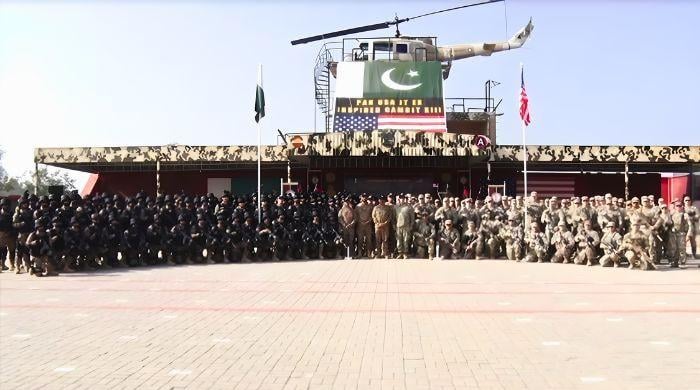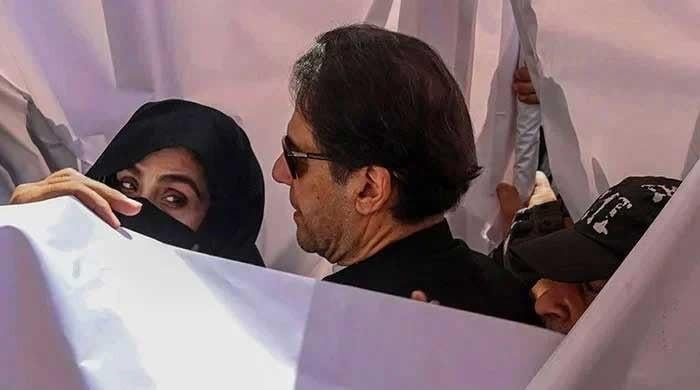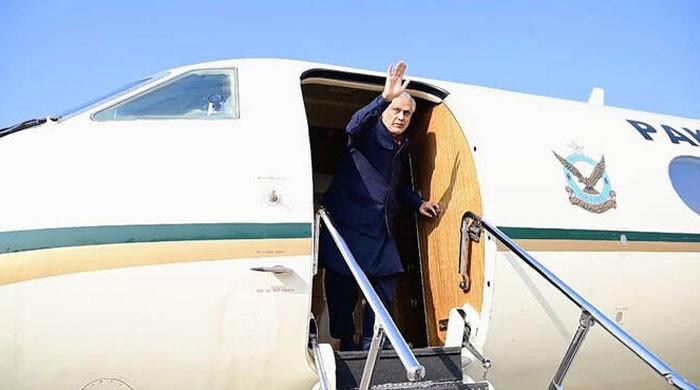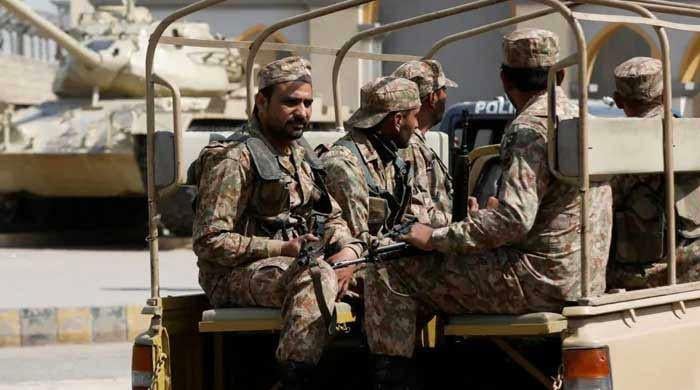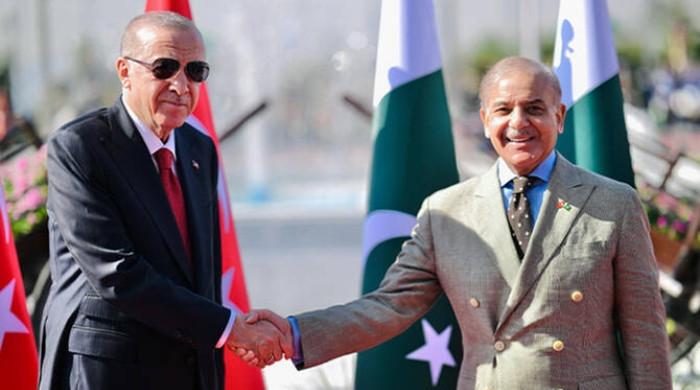Karachi rains: Geo News fact-checks misinformation, dubious reports of crocodiles, diving
'The crocodiles cannot climb the walls either and the water is not [high] enough for them to be able to leave,' Manghopir shrine's custodian says
August 26, 2020
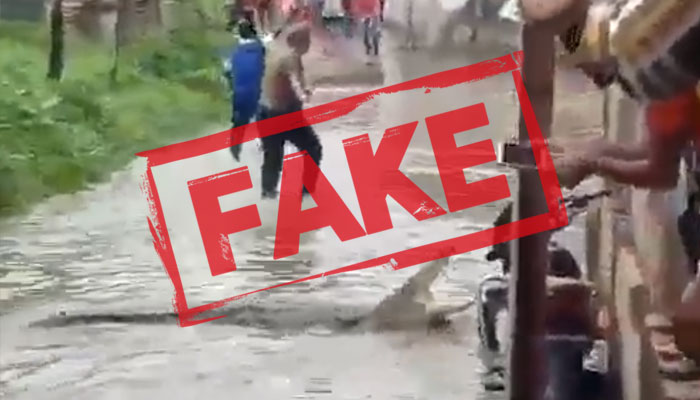
KARACHI: With the historic torrential rains in Pakistan's southern port city, social media, as well as WhatsApp, have been flooded with dubious news reports, videos, and images proclaiming developments that have no basis in reality.
Since Geo News takes pride in sharing accurate information, Geo.tv has conducted a fact check of the various reports circulating on social media, including those claiming that people jumped into large ponds of rainwater and that the famed crocodiles from Manghopir had escaped.
Videos of crocodiles swimming in a body of water were shared with the captions such as the famed Manghopir reptiles were "chilling on city roads", especially on Twitter here, here, here, here, and here and on Facebook here, here, here, here, here, here, here, and here as an "exclusive news".
The most popular and most shared video is from Vadodara in India's Gujarat but it was circulated without any confirmation whatsoever, with those sending claiming that the crocodiles from Manghopir had escaped into Karachi.
Reports of these fake 'creatures' were lapped up by those wishing to instigate conspiracy theories, instil fear among people or just make sarcastic jibes at the leadership.
An independent fact check by Indian publication on October 1, 2019, also showed the video was from Vadodara. At that time, it had been shared with a caption stating it was from Patna in India's Bihar, which again was false.
Speaking to Geo.tv, Javed Mahar, the wildlife conservator at Sindh Forest and Wildlife Department, refuted the reports of Manghopir crocodiles roaming Karachi.
He said he sent a team — which he has trained to analyse fake videos on social media — to Karachi's Central district after receiving calls from concerned individuals claiming there was a crocodile in the playground of a local school.
"We sent our experts there but they found nothing. Our team scanned the whole area," Mahar told Geo.tv. The wildlife expert explained that crocodiles usually remain in water about an hour or 75 minutes before coming out.
He said despite the calls and reports, there was no one who personally witnessed the crocodile in the area.
"We keep digital records and my staff have understood that social media is popular, so they know if something posted [online] is without edit," he underlined.
According to a video Mahar shared with Geo.tv, the sajjada nasheen (custodian) at the Manghopir Shrine & Crocodile Sanctuary said there were no holes in the walls for the reptiles to escape.
"The crocodiles cannot climb the walls either and the water is not [high] enough for them to be able to leave," said Khalifa Sajjad, whose ancestors were custodians of the shrines as well.
"They are neither wild nor feral. The walls are 20-25-feet high and there is a system for rainwater to automatically drain out," he said.
"In fact, closed-circuit television (CCTV) cameras have also been installed if, by any chance, the crocodiles somehow manage to escape or if someone tries to steal them," he added.
Speaking to Geo.tv over call, wildlife conservator Mahar added that someone sent him a photo purportedly of crocodiles swimming in a street of Karachi. He said he sent the image to his team to conduct a forensic analysis, which revealed that it had been doctored by superimposing a layer over the original photo.
It is unfortunate that not only have these reports been on Twitter, Facebook, and Instagram but have spilt over to family and friends groups on WhatsApp and other communication apps, creating panic and fright among the people of Karachi.
In another case, videos and images from a flood in Bangladesh were shared, claiming the scene was from the settlements near Hub Dam. A majority of those who circulated it were unable to recognise the style of conversation in the video either — it was vastly different from Karachi.
Even the plight of Surjani Town was not spared, with the original audio from a video from India dubbed over and shared in Pakistan.
Yet another video showed a man diving into a large body of water, in a scene claimed to be from Karachi and shared with the hashtag #KarachiRains. Another video of a similar incident was said to be linked to it, just that it was shot from a different angle.
The commentary accompanying the video states that it is from Surjani Town in Karachi, with the narrator making a sarcastic jibe at the government of Sindh.
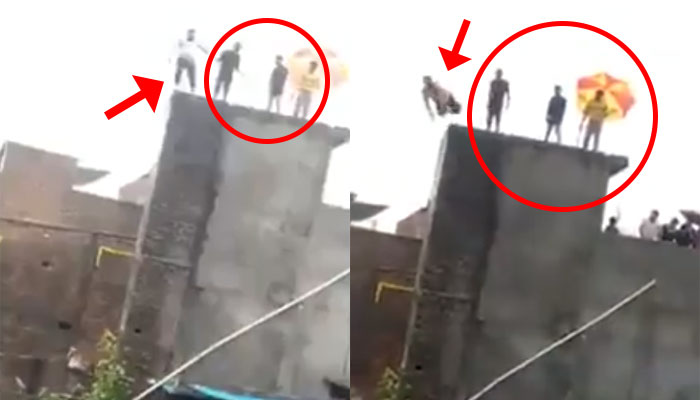
However, there are certain factors to consider. For example, in the first video, the person who dives into the water is first from the left. Also, no one from this side seems to be recording his jump.
In the other video, which is claimed to be from another angle, the person who dives into the water is second from the left; in addition, before jumping into the water, he climbs the boundary wall — something that the diver in the first video does not do.
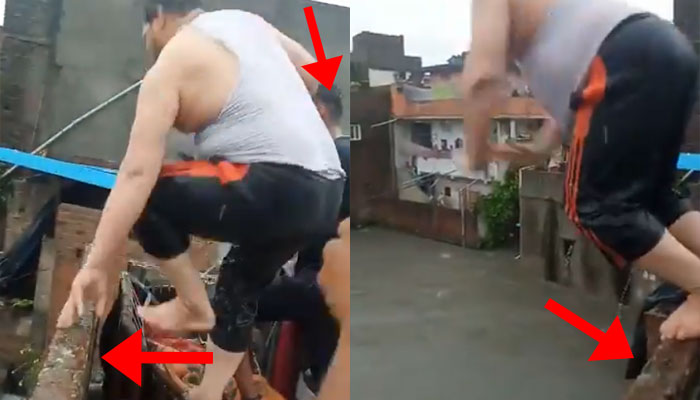
It has become a common practice to twist the truth and share it on social media for a few clicks and retweets. Just like 'not everything that glitters is gold', not everything on social media is true either.
It is commendable that some responsible citizens have shared videos reflecting the real situation in Karachi in an attempt to warn others not to go to that area or to bring the dire conditions to the attention of authorities in Sindh.




